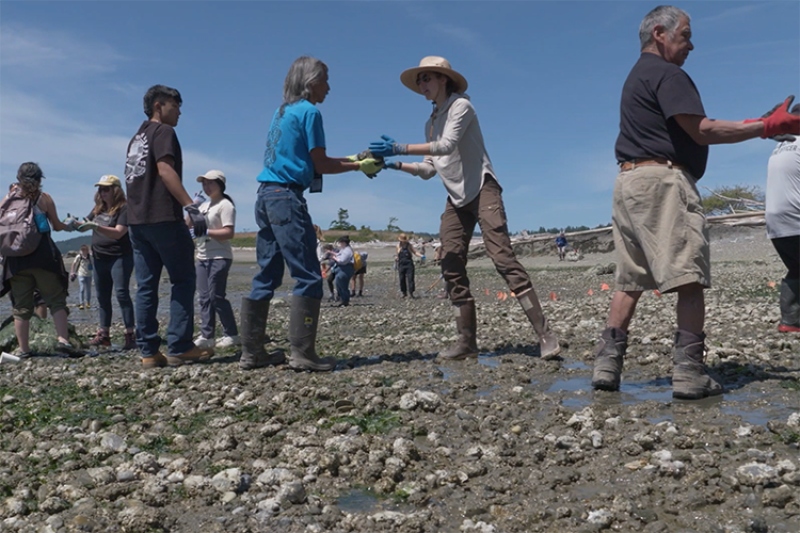NOAA supports the sustainable growth of aquaculture, and shellfish aquaculture is a prominent industry in the Pacific Northwest. One unique—and ancient!—practice we support is clam gardens. Clam gardens are an ancient indigenous practice, passed down through generations. They are a rock wall built on the intertidal zone at the lowest tide point that changes the shape of the beach and makes it optimal for clam habitat. It also increases the biodiversity of the area.
We recently worked with the Swinomish Indian Tribal Community and key partners, including Washington Sea Grant, to help build the first modern clam garden in the United States. Located in Skagit Bay, Washington, the garden will provide food for the community—and environmental diversity, which is important in the face of climate change. Watch the video below to learn what this garen means for the Swinomish community and how they will use the harvest.



